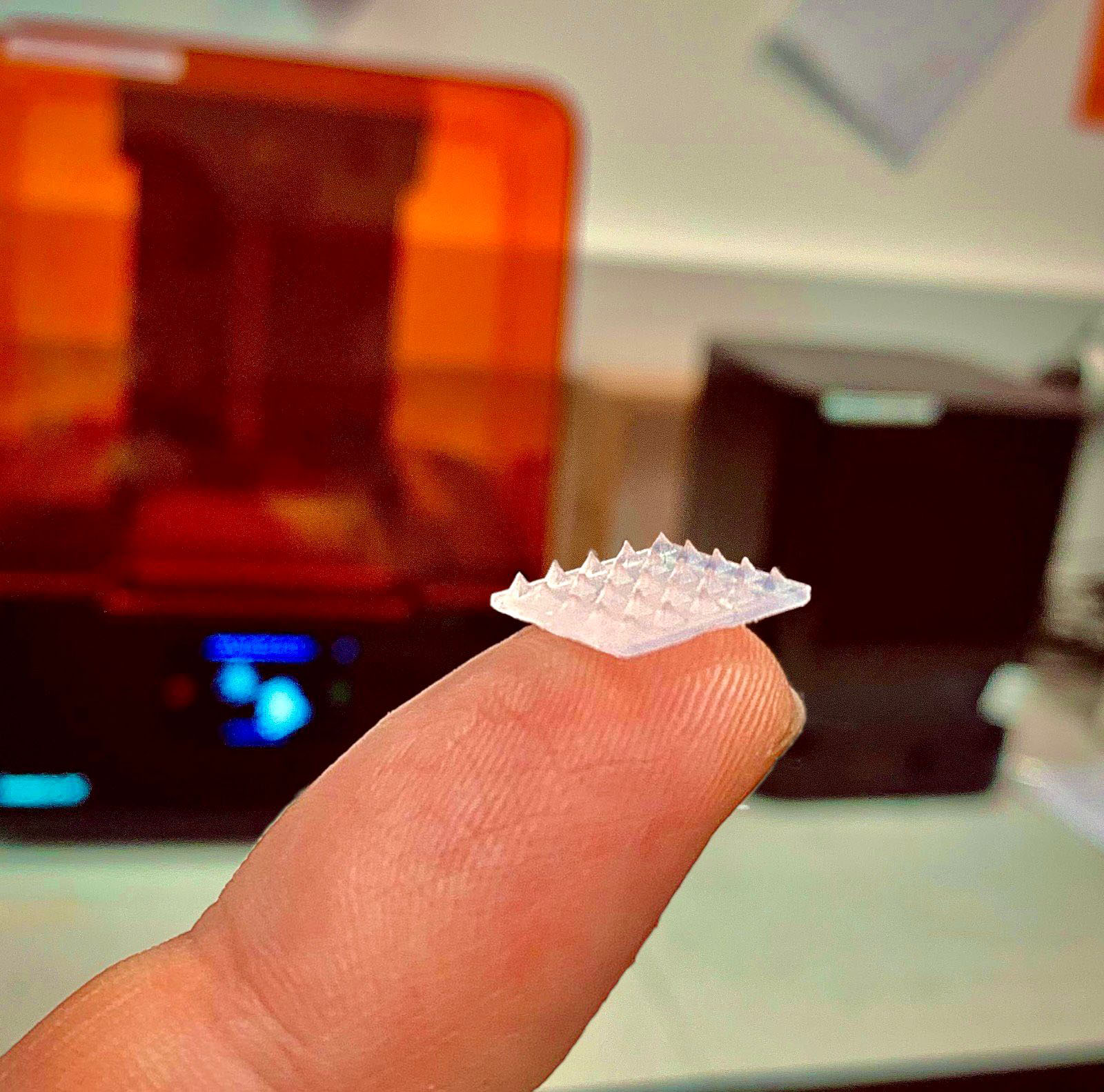| Oct 18, 2023 |
No more big needles: scientists develop a skin patch that painlessly delivers drugs into the body
(Nanowerk News)
An affordable microneedle skin patch that delivers a controlled dosage of medicine directly into the body, eliminating the need for injections or oral medication, has been developed by a team led by scientists at the University of Bath.
|
Key Takeaways
|
|
Scientists at the University of Bath have created an affordable microneedle skin patch for painless drug delivery, which could replace injections and oral medications.
The patches are unique for using hydrogel to encapsulate the active ingredients, allowing for controlled dosage directly into the body.
These patches are more cost-effective than current options, thanks to customization through 3D-printed molds.
The microneedle technology is versatile, successfully delivering antibiotics in experiments and even extracting fluids from the skin for medical analysis.
The team is optimistic about future applications, including delivering vaccines and monitoring hormone levels, and expects the patches to be ready for patient use within 5-10 years.
|
 |
| The team's microneedle patch. (Image: University of Bath)
|
The Research
|
|
The team hopes that the patches, which are described in the journal Biomaterials Advances ("Antimicrobial releasing hydrogel forming microneedles"), will be ready for use within the next five to 10 years.
|
|
What makes the microneedle patches unique is that they are made from a hydrogel (a gel-like substance in which water forms the liquid component), with the active ingredient encapsulated inside the hydrogel microneedle structure rather than in a separate reservoir.
|
|
They are also more affordable than other commercially available microneedle patches, as they are produced from 3D printed moulds. Moulds produced this way are easy to customise, which keeps the costs down.
|
Painless delivery
|
|
The patch is smaller than a pound coin. Barely visible microneedles painlessly pierce the first few layers of skin. Contact with fluid beneath the skin barrier causes the ‘hydrophilic’ (water-loving) needles to swell, prompting a specific dosage of the drug to be delivered into the body.
|
|
In experiments carried out at Bath, upon swelling, the patches delivered doses of antibiotics that elicited a strong response against two bacteria known to cause serious infections – Escherichia coli (E. coli) and Staphylococcus aureus.
|
|
The patch also works in reverse, extracting small quantities of fluid from beneath the skin for medical analysis. This may be helpful, for instance, for monitoring the levels of lactate (a component of lactic acid) and other chemicals in patients with an infection.
|
Clear benefits
|
|
Bath Chemical Engineer Dr Hannah Leese – who continues to refine the skin patch design along with fellow engineers PhD student Joseph Turner and Professor Pedro Estrela, and biologist Dr Maisem Laabei – says microneedle-based skin patches are an ideal system for delivering drugs and have clear benefits over traditional delivery approaches.
|
|
She said: “Injections are invasive and expensive, and they don’t suit everyone. A lot of people are needle-phobic and are understandably reluctant to receive medicine by injection even when treatment is really needed. Others are ill-suited to injections – for instance, elderly patients with thin skin.
|
|
“Also, sometimes the use of needles can introduce pathogens, such as bacteria, that may cause infections, especially in people with low immunity.”
|
|
She added that people generally have fewer objections to taking drugs by mouth, but there are downsides to oral medication too.
|
|
She said: “You can experience gastrointestinal side-effects; there is a delay between taking the medication and the drug getting to where it’s needed in the body; doses need to be higher because a lot of the formulation is broken down in the gut, and if the patient is taking antibiotics, this can also contribute to antimicrobial drug-resistance.'
|
Towards clinical trials
|
|
“Our next step is to continue to refine the microneedle platform and run animal studies before moving to human clinical trials,” said Dr Leese, adding: “I'm hopeful these patches will be ready for patient use within the next five to 10 years."
|
|
Dr Leese anticipates that the patches will be able to deliver both drugs that circulate the entire body and drugs that need to remain more localised – for instance, when there is an infection in a discrete section of skin. There is also scope for the patches to deliver vaccines and to monitor hormone levels.
|
|
“We can also see there being a role for these patches in the health and wellness fields,” she said. “I can picture the day people have microneedles under their smartwatches to detect fluctuations in the stress hormone, cortisol.”
|

